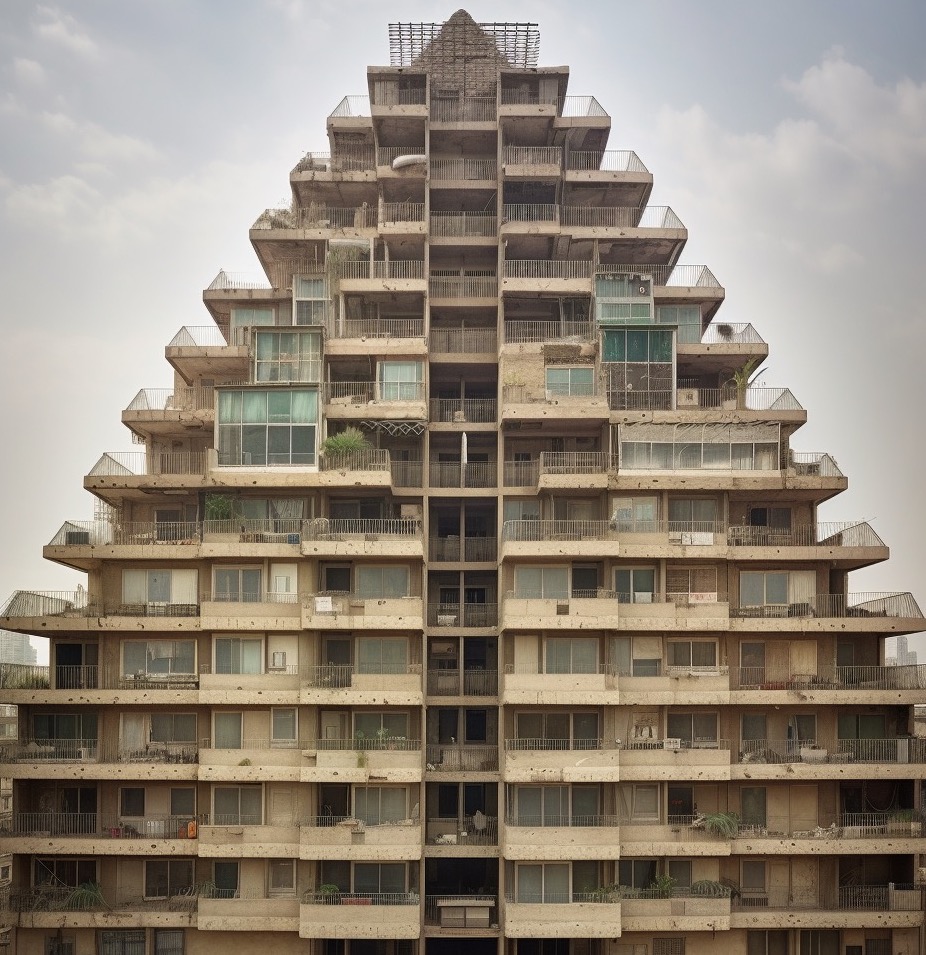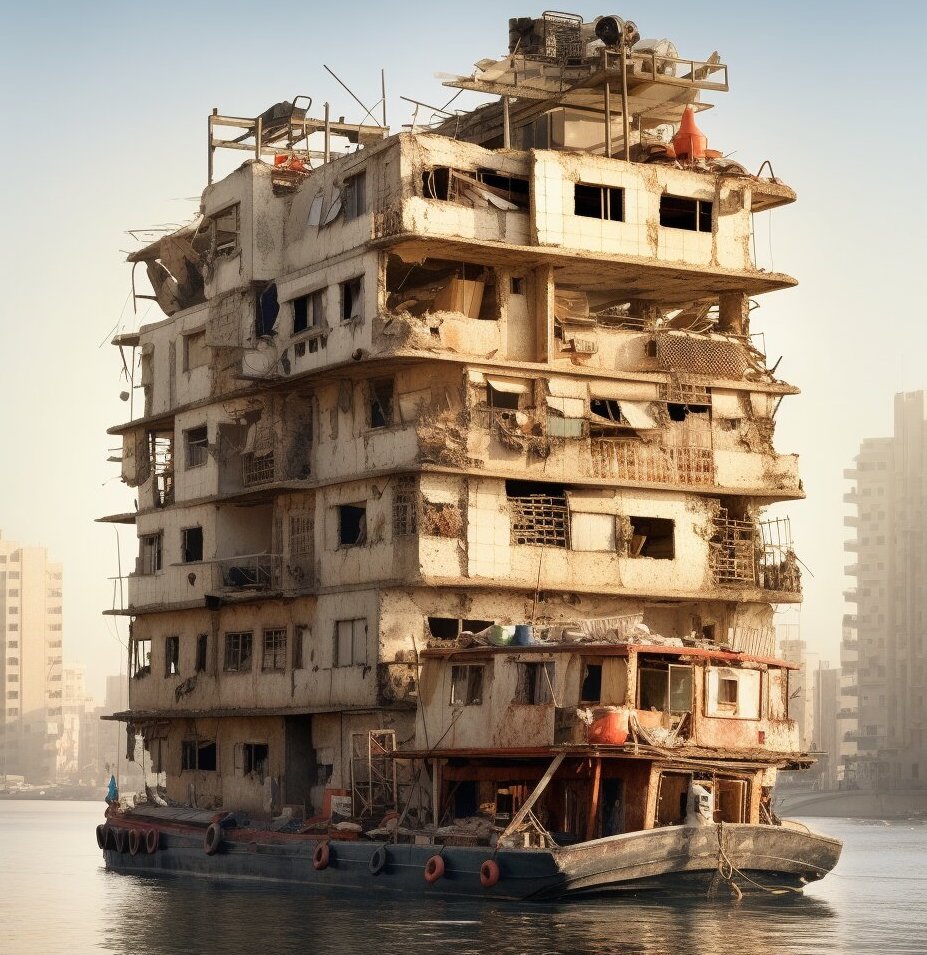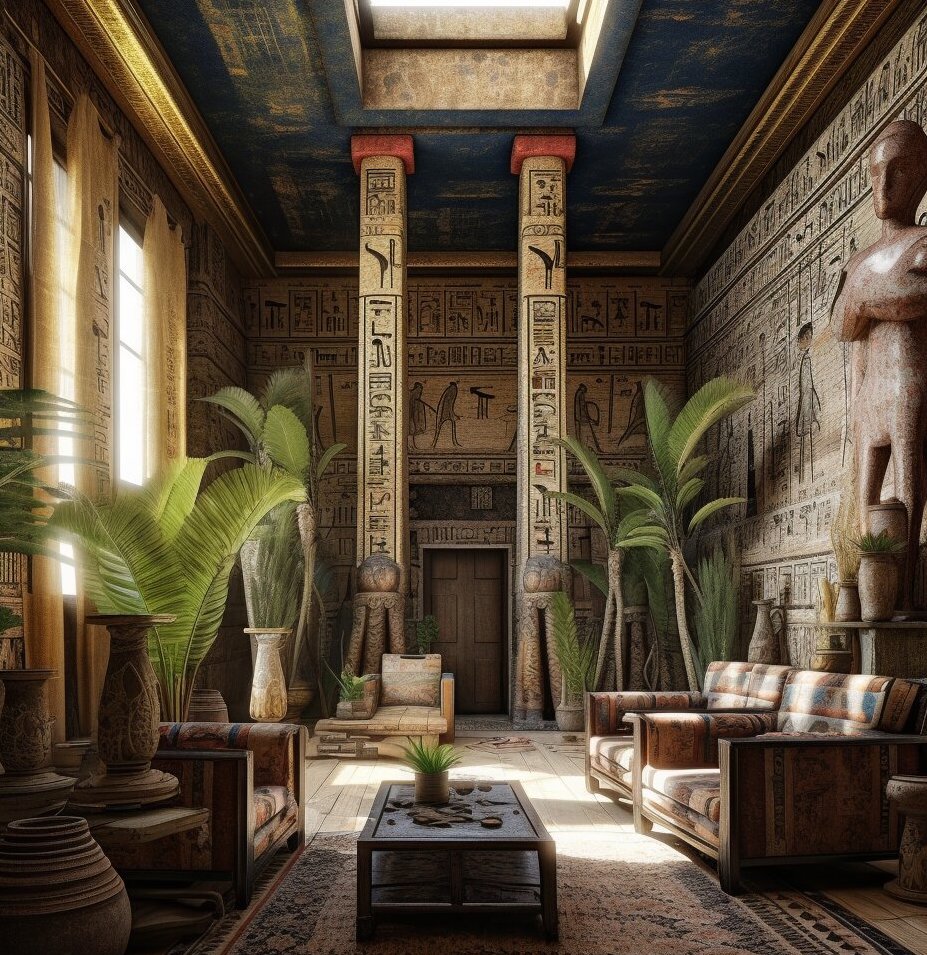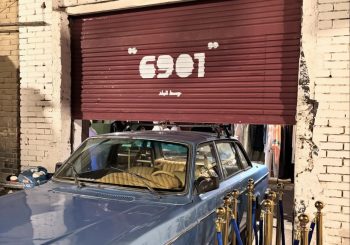What if neighbourhoods around Cairo had a pyramid nestled in between the stone structures every few blocks? Or perhaps buildings featured likenesses of the Sphinx sitting gloriously atop their roofs?
These musings of an imagined modern landscape merged with symbols of the country’s past were brought to life visually by Egyptian architect and conceptual artist Hassan Ragab. Using generative Artificial Intelligence (AI) tool, MidJourney, Ragab re-imagines the capital’s urban landscape by incorporating elements borrowed from the country’s rich heritage. The images are striking in their realism.
Sphinx Visits the Capital
Ragab’s architectural background is felt in his artwork. Having worked as a conceptual designer and artist in the film, music, and fashion industries, it is his pioneering spirit that led him to dabble in AI tools.
The architect started fiddling with DALL.E 2, which is an AI image-generator, similar to Midjourney in its early version.
Both these tools have been hailed for their use in design, with DALL.E 2 geared more towards designers looking to integrate abstract ideas into their designs whereas Midjourney is adept at producing various styles of designs efficiently and at a quick pace. However, both are recommended for designers.

“I started hearing about the text-to-image tools, and at the time they were in their alpha phase of trial, which means users could only try them by invitation,” says Ragab of his first foray into the world of AI. “Once I started, I couldn’t stop because I thought these tools had so much potential.”
Since then, Ragab has been experimenting with different prompts and subjects. His art does not always have a message behind it. Rather, it is a visual manifestation of his own personal reflections. In his series, Conservation & Reuse, Ragab creates images of the Sphinx superimposed on the dilapidated buildings that are part of Cairo’s urban fabric.
“The informal buildings in Egypt are not built in the traditional sense of the word. Despite their lack of organisation or adherence to architectural rules, however, they’re still buildings,” explains Ragab. “It’s still a building. It’s honest. Those constructing it were not looking to mimic any particular design, style or architect. They used the tools they had to create something that is dependent on the resources at hand.”

Ragab created another series of images where he brought the pyramids to Cairo by placing them either side-by-side with other buildings or at the head of structures.
The conceptual artist goes on to say that “we do not see the depth or the story behind a building. We are more focused on what it looks like on the outside rather than the story behind it, judging it on its appearance rather than on what it actually is.”
Art with Purpose
The artist creates myriad imagined scenes made up of buildings which are seemingly out of the ordinary. His series, Refuge, speaks to the plight of the immigrant who when travelling to another country, whether legally or illegally, leaves behind a part of himself: his home.
Using the physical to embody the metaphysical concept of loss and abandonment, this series powerfully evokes an idea that many lack the words to describe.
“When people immigrate, they leave their things behind. But in their hearts, in their souls, no one ever really leaves home, they take it with them in their being,” explains Ragab.

The images in Refuge see homes stacked upon each other with knick-knacks — that tell a story — hanging haphazardly in disarray along the balcony ledges, or on the floor. These homes sit on floating boats heading to an unknown destination.
Immigration in the Middle East and the North African region has been on the rise, with the number of immigrants from the MENA region to the United States doubling from 569,000 to 1.2 million between 2000 and 2019.
But is AI-Biased?
AI-bias is a concept that has recently had netizens — both in the region and globally — in a frenzy, with many accusing the software of not being inclusive towards certain cultures. Promoting certain cultural stereotypes when creating images is one of the issues the technology has come under fire for. The recently shared AI-generated images of Barbie as imagined from different cultures brought to light the cultural inaccuracies and biases that come about as a result of the narrow set of data fed to the generator.
“One of the obstacles I faced when I started using AI was when I put in certain prompts,” shares Ragab. “ For example, when I’d put in a prompt for Zaha Hadid, it would come out accurately. However, if I put in Alexandria or a prompt that has to do with pharaonic structures, the image would not be accurate. Sometimes, it would not even be able to generate the image based on my prompt.”

To a large extent, the images generated by AI hinge upon the set of data that the developers feed it. Tools like Midjourney learn based on the examples — and representations of certain cultures — that are integrated into its system.
“With the metaverse happening, we might risk Egyptian civilization [and culture] — not just Egyptian, cultures globally — not being present enough in a digital way. There has been improvement though but there should be a bigger effort towards the inclusion of built heritage inside the data set,” concludes Ragab.
Subscribe to the Egyptian Streets’ weekly newsletter! Catch up on the latest news, arts & culture headlines, exclusive features and more stories that matter, delivered straight to your inbox by clicking here.








Comment (1)
[…] post Egyptian Artist Uses AI to Reshape the City’s Infrastructure first appeared on Egyptian […]